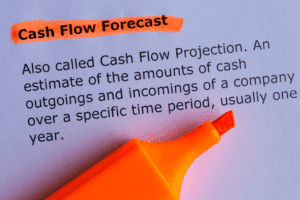
The partner’s interest basis is adjusted to reflect the value of the contributed property or cash, influencing https://cursos.yoreparo.com/bookkeeping-wikipedia/ future tax liabilities. P, after having been a sole trader for some years, entered into partnership with Q on 1 July 20X2, sharing profits equally. A partnership is a business arrangement in which two or more people own an entity, and personally share in its profits, losses, and risks.
Distribution of Profit Among Partners

The balance of the deceased partner’s capital account is then transferred to a liability account with the deceased’s estate. Once the decision to dissolve has been made, the partnership moves into the liquidation phase. This involves settling all outstanding obligations, including paying off debts and distributing any remaining assets among the partners. The liquidation process can be complex, requiring meticulous attention to detail to ensure that all financial matters are resolved equitably.
- A limited liability partnership (LLP) is an extension of a general partnership that limits the legal liability of all partners.
- Once the decision to dissolve has been made, the partnership moves into the liquidation phase.
- According to the data generated by the IRS, many partnerships have already been seen implementing the tax basis method using multiple measures to adjust the opening balance of the account.
- Another point to remember is that the ‘appropriation account’ is an additional accounting statement that is required for a partnership.
- If the account is a fixed capital account, then the only capital contribution is to be credited, and all other transactions are to be recorded in the current account.
- A product mix or assortment is the set of all products and items that a particular seller offers for sale.
Fixed Ratio

For instance, real estate might be appraised based on recent sales of comparable properties, while equipment could be valued based on its current condition and market demand. Goodwill, for example, is often valued based on the partnership’s earning potential and reputation, requiring a more subjective approach. This might involve discounted cash flow analysis or other financial models that project future earnings and discount them to present value. Partnership accounting allows for the shared responsibility and decision making between partners, potentially leading to a more diverse skillset and better decision making for the business. It also allows for the sharing of financial resources, making it easier to start and grow a business. Partnership accounting facilitates access to increased financial resources, enabling partners to combine https://www.bookstime.com/articles/financial-risk their investments and capital to support business operations and growth initiatives.
Limited Liability Partnerships (LLPs):

Registering an LLP requires several steps to comply with legal standards. The first step is selecting a unique name that what is partnership accounting adheres to state naming conventions and includes “Limited Liability Partnership” or “LLP” to indicate its legal status. To establish an LLP, at least two partners are required, with no upper limit on the number.

If total revenues exceed total expenses of the period, the excess is the net income of the partnership for the period. If expenses exceed revenues of the period, the excess is a net loss of the partnership for the period. Guaranteed payments are those made by a partnership to a partner that are determined without regard to the partnership’s income. At the end of the accounting period the drawing account is closed to the capital account of the partner. The capital account will be reduced by the amount of drawing made by the partner during the accounting period.
In some cases, partners may receive compensation in the form of salaries for their work within the partnership, which adds another layer of complexity to the withdrawal and distribution process. Salary or Commission to a partner will be allowed if the partnership agreement is said. Accounting Treatment – Interest on drawings is profit or gain to the Firm and credited to the Profit& Loss Appropriation Account. On the other hand, interest on drawings is a loss to the partner and debits to his Current/Capitals Account.
If you see it carefully (remember double entry?) Try matching up interest on capital from Allen Capital Account to Profit And Loss Appropriation Account and try to match the rest of them! In the Chapter 1 Partnership Class 12 notes, there is a mention of the term principal agency relationship. In this case, the business of the partnership might be conducted by either all the partners or just one partner who is working on behalf of all the others. Students really need to gather more information on these topics in order to have as much idea as they can about the chapter. One of the most important features of a particular partnership would have to be the business. According to the Partnership Act, it is not possible to have an agreement in case the partners carry out functions as charitable activities.
Financial Statements for Limited Companies
This hybrid approach can help balance the interests of all partners and ensure a fair distribution. One common method for distributing profits and losses is based on the partners’ capital contributions. In this approach, each partner receives a share of the profits proportional to their initial investment in the partnership. For example, if Partner A contributed 60% of the capital and Partner B contributed 40%, the profits and losses would be divided in the same ratio.
Capital Contributions & Withdrawals
By agreement, a partner may retire and be permitted to withdraw assets equal to, less than, or greater than the amount of his interest in the partnership. The book value of a partner’s interest is shown by the credit balance of the partner’s capital account. Assume now that Partner A and Partner B have balances $10,000 each on their capital accounts. In return, Partner C will receive one-third equity in the partnership. Assume that Partner A and Partner B have balances $10,000 each on their capital accounts.
